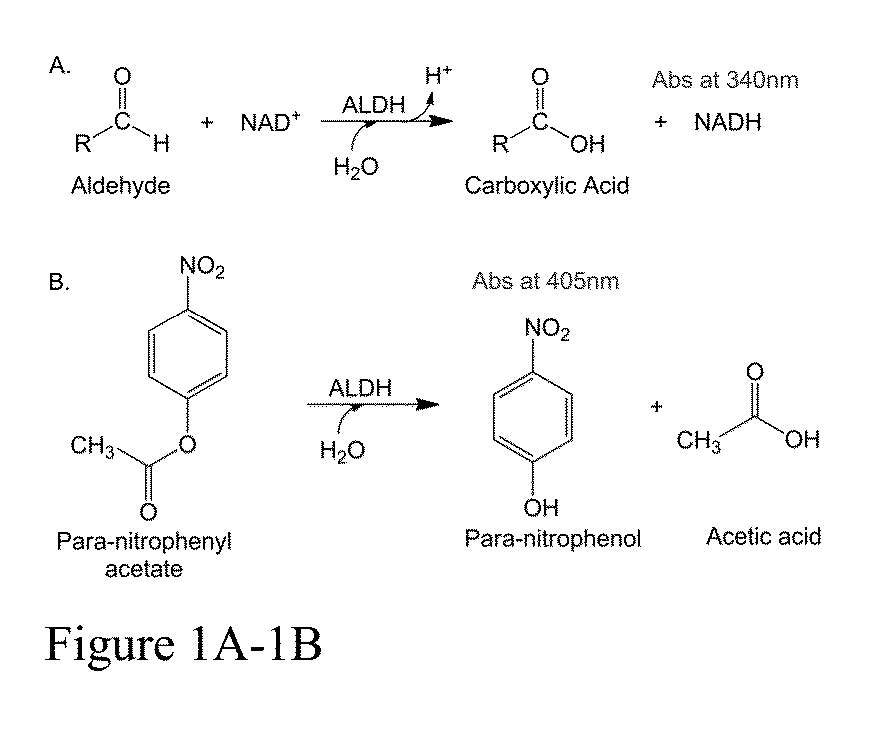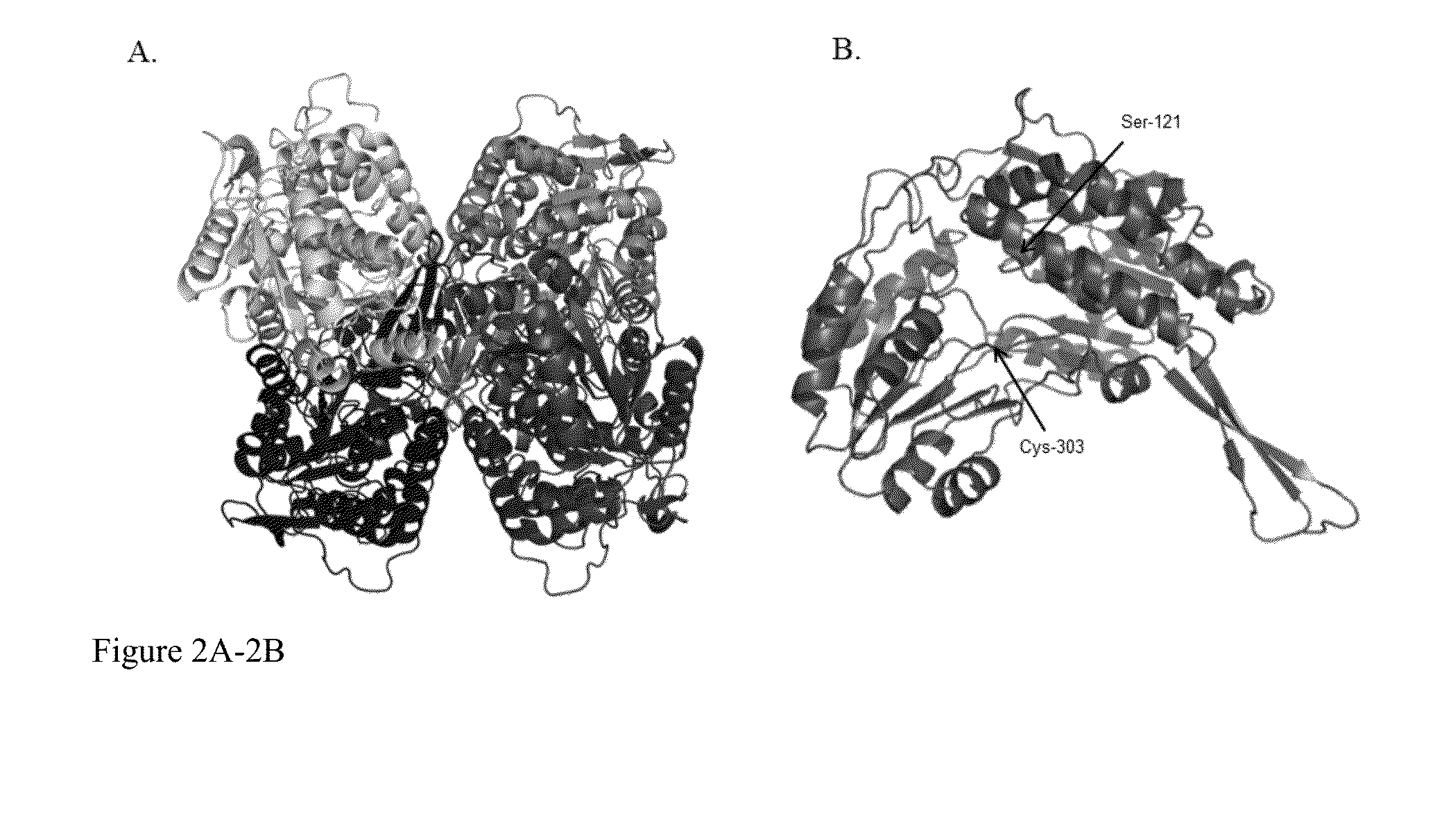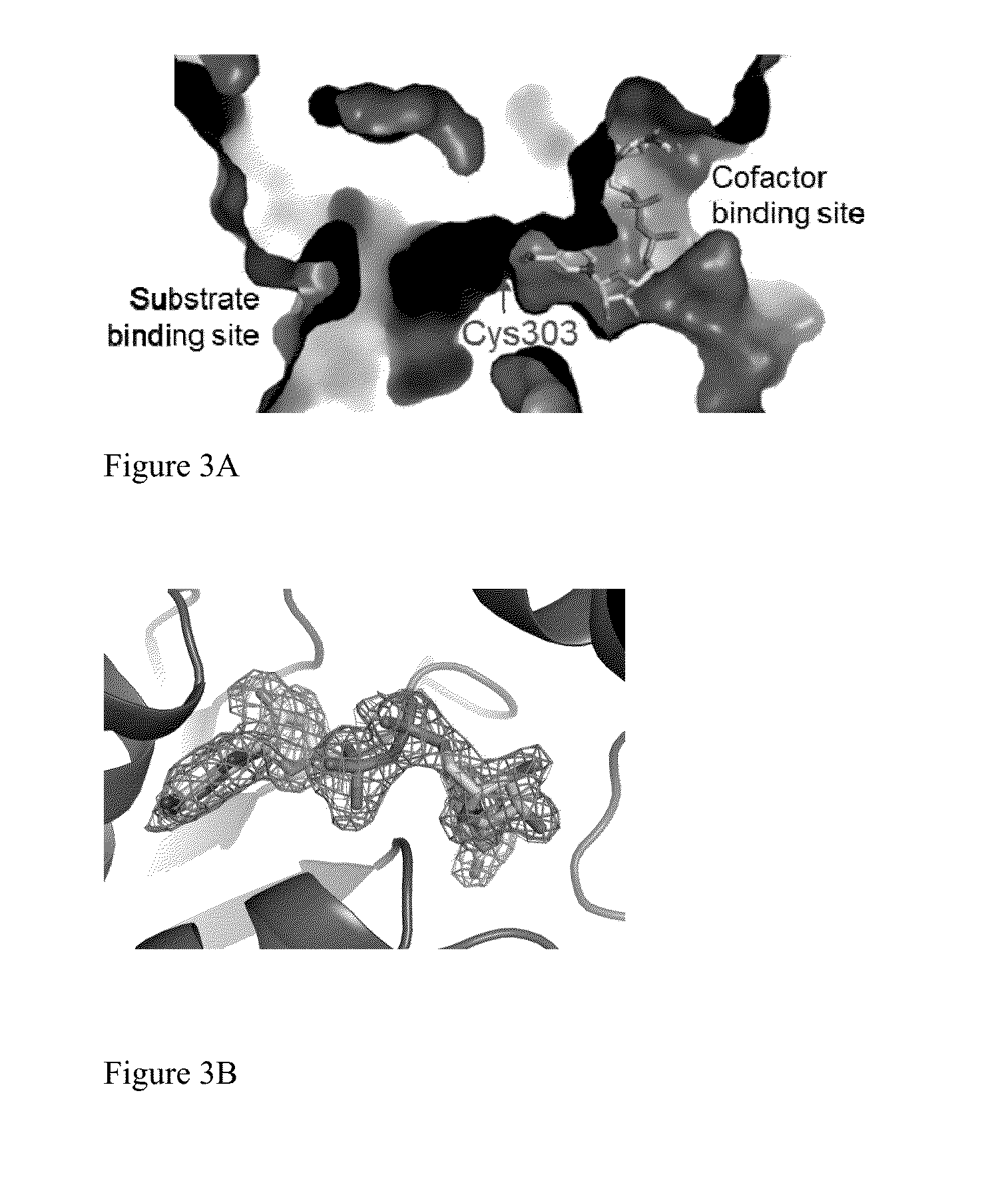Compositions of ALDH1a1 inhibitors and methods of use in treating cancer
a technology of aldh1a1 and inhibitors, which is applied in the field of compositions of aldh1a1 inhibitors and methods of use in treating cancer, can solve the problems of difficult development of selective modulators that target aldh1a1, difficulty in selective modulator development, and difficulty in aldh1 family, which shares over 60% protein sequence identity,
- Summary
- Abstract
- Description
- Claims
- Application Information
AI Technical Summary
Benefits of technology
Problems solved by technology
Method used
Image
Examples
example 1
[0246]1. Black, Hum Genomics, 2009. 4(2): p. 136-42.[0247]2. Durrenberger, Parkinsons Dis, 2012. 2012: p. 214714.[0248]3. Galter, Neurobiol Dis, 2003. 14(3): p. 637-47.[0249]4. Ziouzenkova, Nat Med, 2007. 13(6): p. 695-702.[0250]5. Ress, Toxicol Sci, 2003. 71(2): p. 198-206.[0251]6. Marcato, Cell Cycle, 2011. 10(9): p. 1378-84.[0252]7. Kastan, lood, 1990. 75(10): p. 1947-50.[0253]8. Jones, Blood, 1995. 85(10): p. 2742-6.[0254]9. Storms, Proc Natl Acad Sci USA, 1999. 96(16): p. 9118-23.[0255]10. Emadi, Nat Rev Clin Oncol, 2009. 6(11): p. 638-47.[0256]11. Dixon, Enzymes. 3d ed. 1979, New York: Academic Press. xxiv, 1116 p.[0257]12. Rossmann, Evolutionary and Structural Relationships among Dehydrogneases, in The Enzymes, P. D. Boyer, Editor. 1975, Academic Press: New York City. p. 61-102.[0258]13. Perez-Miller, Nat Struct Mol Biol, 2010. 17(2): p. 159-64.[0259]14. Liu, Z. J., et al., Nat Struct Biol, 1997. 4(4): p. 317-26.[0260]15. Farres, J., et al., Biochemistry, 1995. 34(8): p. 2592...
example 2
[0285]1. Vasiliou, Drug Metab Rev 2004, 36, 279-99.[0286]2. Yoshida, Enzyme 1992, 46, 239-44.[0287]3. Kurys, J Biol Chem 1989, 264, 4715-21.[0288]4. Esterbauer, Free Radic Biol Med 1991, 11, 81-128.[0289]5. Sayre, Curr Med Chem 2001, 8, 721-38.[0290]6. Chevion, Free Radic Res 2000, 33 Suppl, S99-108.[0291]7. Marchitti, Expert Opin Drug Metab Toxicol 2008, 4, 697-720.[0292]8. O'Brien, Crit Rev Toxicol 2005, 35, 609-62.[0293]9. Klyosov, Biochemistry 1996, 35, 4445-56.[0294]10. Yoshida, Proc Natl Acad Sci USA 1984, 81, 258-61.[0295]11. Peng, Pharmacogenet Genomics 2007, 17, 845-55.[0296]12. Marchitti, Pharmacol Rev 2007, 59, 125-50.[0297]13. Yao, Nat Med 2010, 16, 1024-8.[0298]14. Rizzo, J Clin Invest 1988, 81, 738-44.[0299]15. Rizzo, Hum Mutat 2005, 26, 1-10.[0300]16. Mills, Nat Med 2006, 12, 307-9.[0301]17. Geraghty, Hum Mol Genet 1998, 7, 1411-5.[0302]18. Farrant, J Biol Chem 2001, 276, 15107-16.[0303]19. Marchitti, Biochem Biophys Res Commun 2007, 356, 792-8.[0304]20. Ma, Stem Cell...
example 3
[0349]1. Naora, Nat Rev Cancer. 2005 May; 5(5):355-66.[0350]2. Steeg, Nat Med. 2006 August; 12(8):895-904.[0351]3. Levanon K, Journal of clinical oncology. 2008 Nov. 10; 26(32):5284-93.[0352]4. Sodek K L Int J Cancer. 2008 Nov. 26.[0353]5. Burleson K M, J Transl Med. 2006; 4:6.[0354]6. Puiffe M L, Neoplasia. 2007 October; 9(10):820-9.[0355]7. Burleson K M, Clin Exp Metastasis. 2004; 21(8):685-97.[0356]8. Park S H, Mol Endocrinol. 2008 September; 22(9):2085-98.[0357]9. Cao L, Oncogene. 2012 May 17; 31(20):2521-34.[0358]10. Ray A, International journal of oncology. 2011 October; 39(4):797-804.[0359]11. Moss N M, Cancer research. 2009 Sep. 1; 69(17):7121-9.[0360]12. Fang D, Cancer Res. 2005 Oct. 15; 65(20):9328-37.[0361]13. Zhang S, Cancer research. 2008 Jun. 1; 68(11):4311-20.[0362]14. Cody N A L, Bmc Medical Genomics. 2008 Aug. 7; 1.[0363]15. Chang T T, Tissue Engineering Part A. 2009 March; 15(3):559-67.[0364]16. Gaedtke L, Journal of Proteome Research. 2007 November; 6(11):4111-8.[...
PUM
| Property | Measurement | Unit |
|---|---|---|
| molecular weight | aaaaa | aaaaa |
| pH | aaaaa | aaaaa |
| pH | aaaaa | aaaaa |
Abstract
Description
Claims
Application Information
 Login to View More
Login to View More - R&D
- Intellectual Property
- Life Sciences
- Materials
- Tech Scout
- Unparalleled Data Quality
- Higher Quality Content
- 60% Fewer Hallucinations
Browse by: Latest US Patents, China's latest patents, Technical Efficacy Thesaurus, Application Domain, Technology Topic, Popular Technical Reports.
© 2025 PatSnap. All rights reserved.Legal|Privacy policy|Modern Slavery Act Transparency Statement|Sitemap|About US| Contact US: help@patsnap.com



